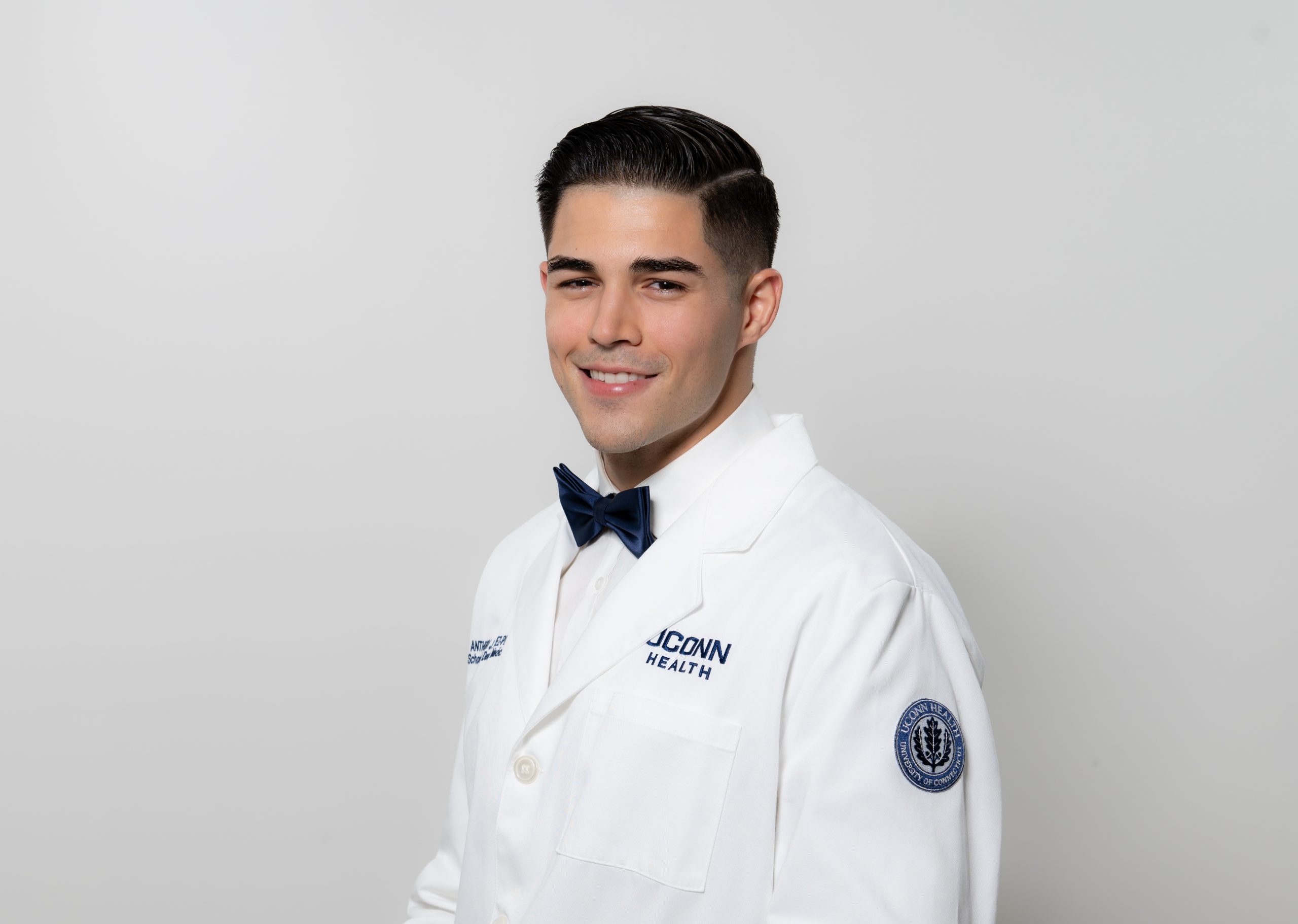The University of Connecticut Alcohol Research Center achieved a milestone recently when the National Institutes of Health’s National Institute on Alcohol Abuse and Alcoholism renewed the center’s funding for another five years. Founded in 1978, the Center was already the longest-funded center, both at UConn and within the NIH/NIAAA structure. The new grant funds the ARC through late 2017, when it will mark its 40th anniversary. Longevity isn’t the ARC’s sole claim to fame, however. Its research into the causes and treatment of alcohol disorders has led to groundbreaking advances and a worldwide reputation.

“Our Center has done a great deal of good work in this field,” says Victor Hesselbrock, the ARC’s longtime principal investigator and scientific director. “We’re recognized nationally and internationally for work we’ve done in terms of identifying, categorizing and treating individuals with alcohol-related problems.”
The Center’s research programs cut across a variety of areas, from developing pharmacological and behavioral therapies to exploring the genetic and biological roots of addiction and creating diagnostic tools. The wide range of its research program is one of the reasons the Center has been able to attract approximately $100 million from various funding sources over the last 35 years.
Robert Huebner, acting director of the NIAAA’s Division of Treatment and Recovery Research, says that ARC researchers “do an outstanding job of building upon what’s known and making sure the science is very solid, but are also not afraid to push the boundaries in terms of the full range of issues with alcohol use, from etiology to treatment to implementation.” Huebner adds: “The Center is also a prime example of translational research – a role model for those who want to translate basic research on the causes of alcoholism into actual treatment for the disorder.”
Alcohol dependence is a significant problem. In the United States, approximately 18 percent of men and 8 percent of women will have a problem with alcohol over their lifetimes. Plus, as Hesselbrock notes, “If you look at the burden of disease in the world and all the related problems – health care costs, lost workdays, injuries – alcohol disorders probably rank number three or four in terms of the cost to society.”
The problem is serious, but there are effective treatments for alcohol disorders, and many of them originated at the UConn Alcohol Research Center.
Pharmacological Breakthroughs
Among the Center’s most notable achievements was the development of naltrexone, a medication that discourages alcohol abuse by blocking alcohol’s pleasurable effects. When it was approved by the federal Food and Drug Administration in the 1990s, it was the first new medication for alcoholism treatment in more than 50 years. “Naltrexone is now the front-line medication for treating people who have significant alcohol abuse disorder,” says Hesselbrock. The medication is widely used in the U.S. and in Europe and will be approved for use in Japan this year.
The ARC was also instrumental in the development of acamprosate. Approved by the FDA in 2004, acamprosate is a primary medication for treatment of alcoholism. The Center’s investigators have contributed to research on drugs already approved for other purposes that have proven to be effective in treating people with alcohol problems.
Hesselbrock says that pharmacological treatments for alcohol disorders have advanced significantly in the past 10 years, and he expects this to be a very promising avenue of research going forward.
Behavioral Therapies
The ARC’s research has also focused on developing behavioral interventions for people with alcohol and other drug problems. It participated in Project MATCH, an NIAAA-funded, nine-site study directed by UConn’s Thomas Babor. The study compared three types of behavior-based therapy: one a 12-step program similar to that of Alcoholics Anonymous, one using cognitive-behavioral therapy, and a third involving advice on reducing drinking. Findings showed that a significant percentage of people in each group improved. Hesselbrock says that “the positive message to people with alcohol problems is to come and get treatment, and if you follow the ‘prescription,’ chances are you’ll do quite a bit better.”
Other ARC investigators, including Mark Litt, and Ronald Kadden, have taken this work and applied it to individuals who are problem drinkers or want to reduce marijuana use. Dr. Yifrah Kaminer has applied these techniques to teens using marijuana and others. These research efforts have had good success.
UConn Professor of Medicine Nancy Petry is spearheading work with a behavioral therapy called contingency management. Contingency management is based on rewarding patients for behavior change. Petry has applied the therapy successfully to people with alcohol, cocaine, opioid and marijuana problems. “She’s had success with chronic recidivists – individuals who are high utilizers of behavioral health services,” Hesselbrock says. She has also used it to help people reduce weight, increase exercising and improve medication adherence. Petry has developed materials and training to enable others to use contingency management, and her approach is being implemented nationwide throughout the Veterans Administration.
Exploring Genetics
The ARC is one of six sites nationwide participating in the NIAAA-funded Collaborative Study on the Genetics of Alcoholism. Dr Hesselbrock is co-principal investigator of the national study. COGA aims to learn more about how genes affect vulnerability to alcoholism. To date, researchers have studied more than 17,000 individuals and found 32 different genes that contribute to a person’s susceptibility to alcoholism.
As an outgrowth of COGA, ARC investigators Dr. Jonathan Covault and Eric Levine are now using immature pluripotent stem cells which are converted from skin cells from people with alcoholism to form neurons. They then treat the neurons with alcohol to observe its effects on function. Over time, this information should help identify people at risk of alcoholism and possibly lead to new biological treatments.
Using COGA methodology, the center is also studying genes of those with cocaine and opium dependence. Many people addicted to these drugs are also addicted to alcohol. “We want to see if there are specific genes for each or if there are genes held in common that seem to contribute to addictive disorders,” Hesselbrock says.
Youth and Adolescents
The Center has studied children and adolescents extensively, with the goal of establishing a deviance proneness model, that is, a set of biological, psychological or environmental factors that may contribute to young people’s developing alcohol problems in the future. ARC researchers, led by Lance Bauer, have identified brain wave characteristics associated with poor adult outcomes. These characteristics cut across gender, ethnicity and IQ. They are often associated with conduct disorders and may predict treatment outcome. The Center also has an active program of research studying the role of stress and alcohol use among college students while in school and post-graduation. Directed by Howard Tennen, this study is examining the role of genetic and environmental factors in drinking behavior over time.
Clinical Assessment and Screening
UConn’s Alcohol Research Center has been a world leader in developing clinical assessment and screening tools. One, the Semi-Structured Assessment for the Genetics of Alcoholism, has been used in 275 studies and translated into nine different languages. The AUDIT (Alcohol Use Disorders Identification Test), which Thomas Babor helped develop, is used worldwide for screening for alcohol use disorders. A newer version, called ASSIST (Alcohol, Smoking and Substance Involvement Screening Test), screens for dual addictions. In a significant step, the Center for Medicare and Medicaid Services has now mandated that ASSIST, plus brief interventions Babor developed, be used for screening and treatment of all hospital inpatients. “The fact that this has been mandated is an amazing translational finding,” says Hesselbrock. “If we can identify people earlier in their addiction and intervene earlier, we may have a greater impact, and that’s just tremendous.”
The Work Ahead
Victor Hesselbrock expects the Center to continue to make progress in a variety of research areas as it completes its fourth decade. He stresses that both professionals and the public should keep in mind some facts about alcohol disorders. While many people may associate alcoholism with those on society’s fringes, he says, “The face of addiction is the face of the nation. It’s not specific to any one ethnicity, gender, or socioeconomic group. Fortunately, the treatments we have can make an important difference and improve people’s lives.”
Follow the UConn Health Center on Facebook, Twitter and YouTube.



